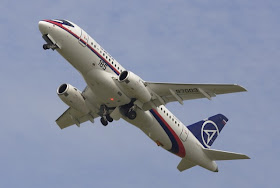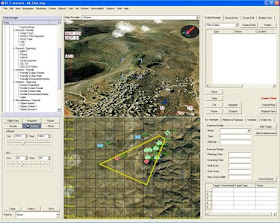 Su-35 (photo : knaapo)
Su-35 (photo : knaapo)
At one point, the Su-35 was touted as competition for the F-22. It isn't. That competition would be the PAK-FA, which had its first flight earlier this year. There are only three prototypes of the Su-35, and one of those crashed last year. The cause was a problem with one of the two engines. Russia had hoped to have the destroyed prototype fly over the May Day parade in Moscow on May 1st. The crash was really bad PR, since one of the consistent shortcomings of Russian warplanes has been the unreliable engines.
 Su-35 radar coverage (image : ares)
Su-35 radar coverage (image : ares)Two years ago, the Su-35 had its first flight. Progress has been slow. The Su-35 has been in development since the 1990s. At one point, it was called the Su-37, but the name was changed back to Su-35. Since the 1990s, two different Su-35 prototypes were built. There were many disagreements over what direction the development should take, and by the late 1990s, the project was basically suspended for lack of funding.
The Su-35 is a 34 ton fighter that is more maneuverable than the original, 33 ton, Su-27, and has much better electronics. It can cruise at above the speed of sound. It also costs at least fifty percent more than the Su-27. That would be some $60 million (for a barebones model), about what a top-of-the-line F-16 costs. The Su-27 was originally developed to match the F-15, which is larger than the single engine F-16. The larger size of the Su-27/35, allows designers to do a lot more with it in terms of modifications and enhancements. The Su-35 will carry a 30mm autocannon (with 150 rounds) and up to eight tons of munitions, hanging from 12 hard points.
 This chart compares graphically the peak power aperture product estimates for the Flanker radars, and the APG-79. The latter is depicted with some provision for growth. Hybrid array technology used in the BARS and Irbis E provide similar total noise figure for the antenna-receiver design to that of AESA designs like the APG-79. Growth JSF APG-81 radars will be similar to the APG-79. Block upgrades to the BARS to convert it into an Irbis E configuration will not present difficulties as the latter is an uprated derivative of the former. (ausairpower)
This chart compares graphically the peak power aperture product estimates for the Flanker radars, and the APG-79. The latter is depicted with some provision for growth. Hybrid array technology used in the BARS and Irbis E provide similar total noise figure for the antenna-receiver design to that of AESA designs like the APG-79. Growth JSF APG-81 radars will be similar to the APG-79. Block upgrades to the BARS to convert it into an Irbis E configuration will not present difficulties as the latter is an uprated derivative of the former. (ausairpower) T-50 PAK FA (photo : knaapo)
T-50 PAK FA (photo : knaapo)Russia will also need a new family of air-to-air missiles, as the current ones are too large for the internal bays on the PAK FA prototype. These are already in the works, along with more compact versions of air-to-surface missiles. There are also problems with the electronics and, well, you get the picture.





































